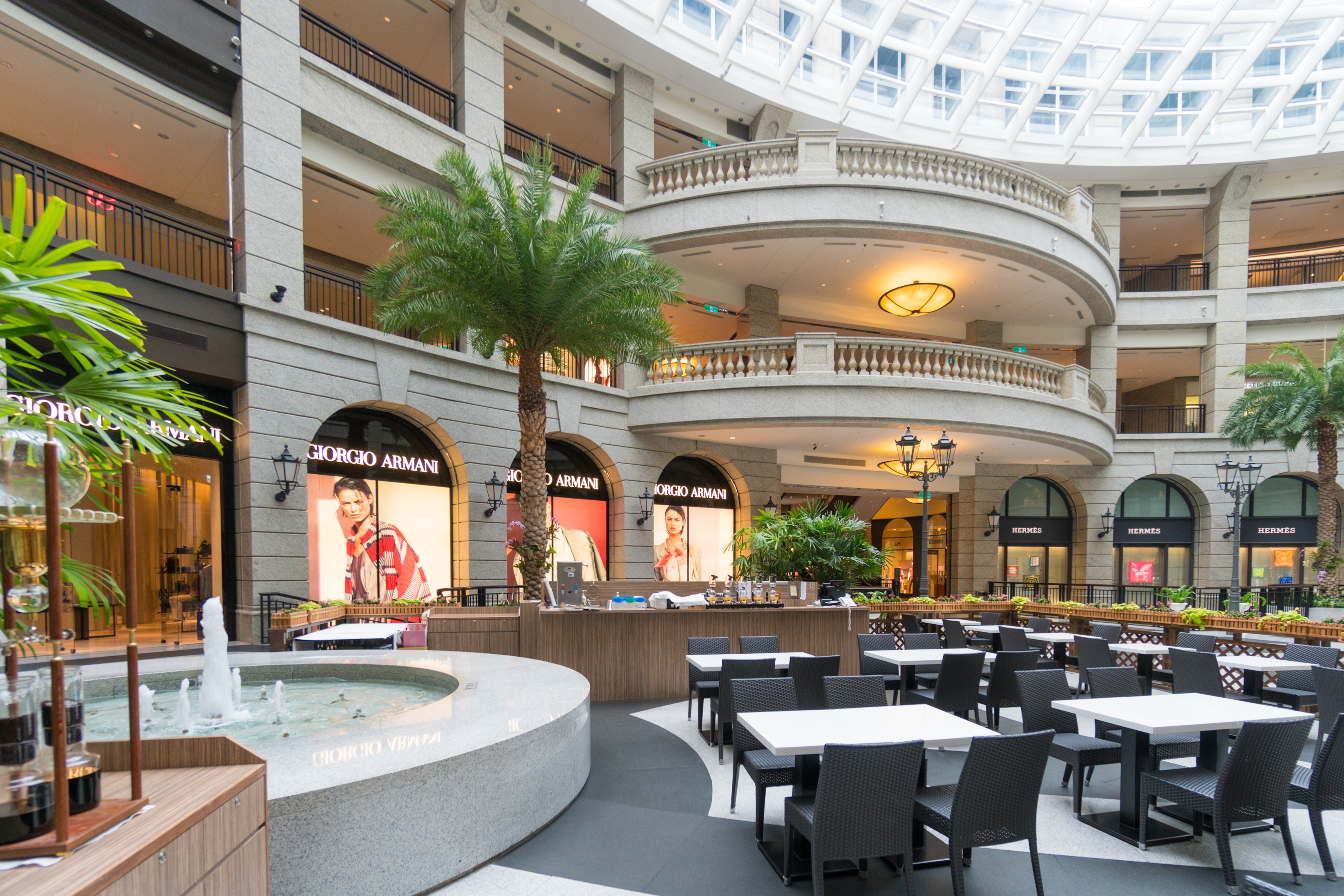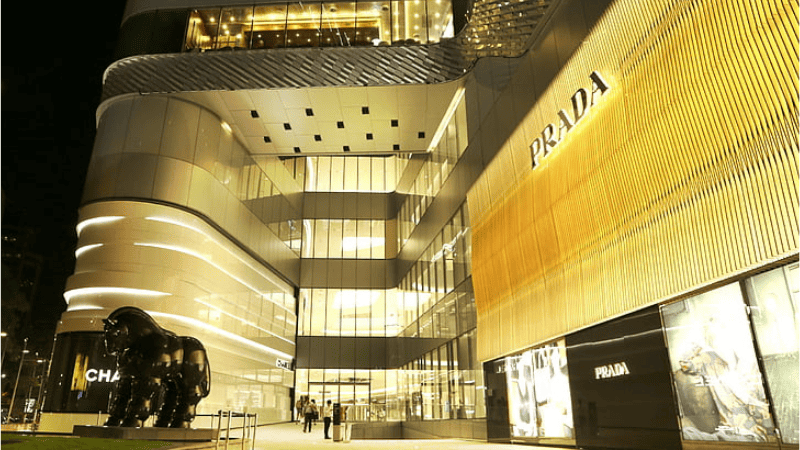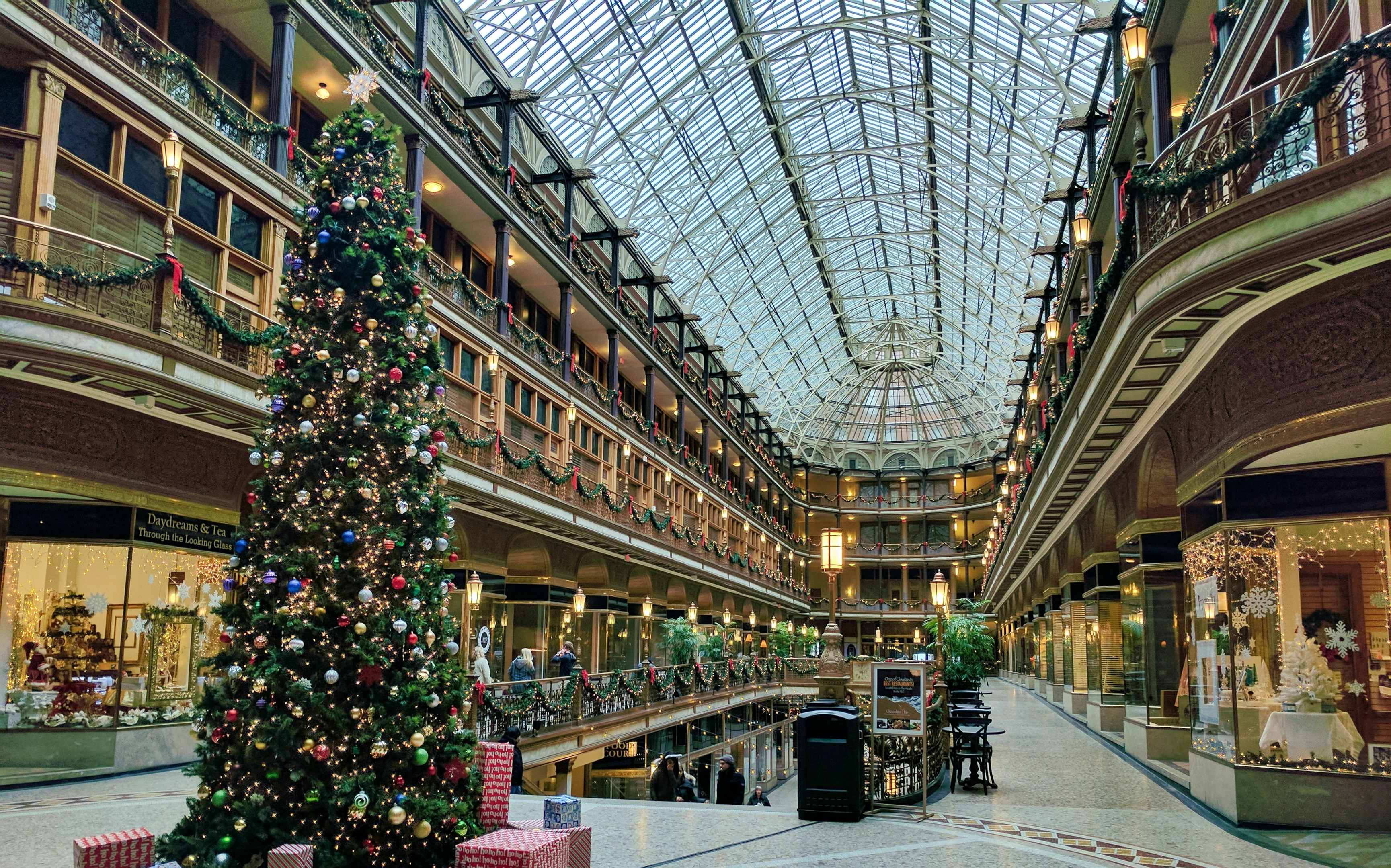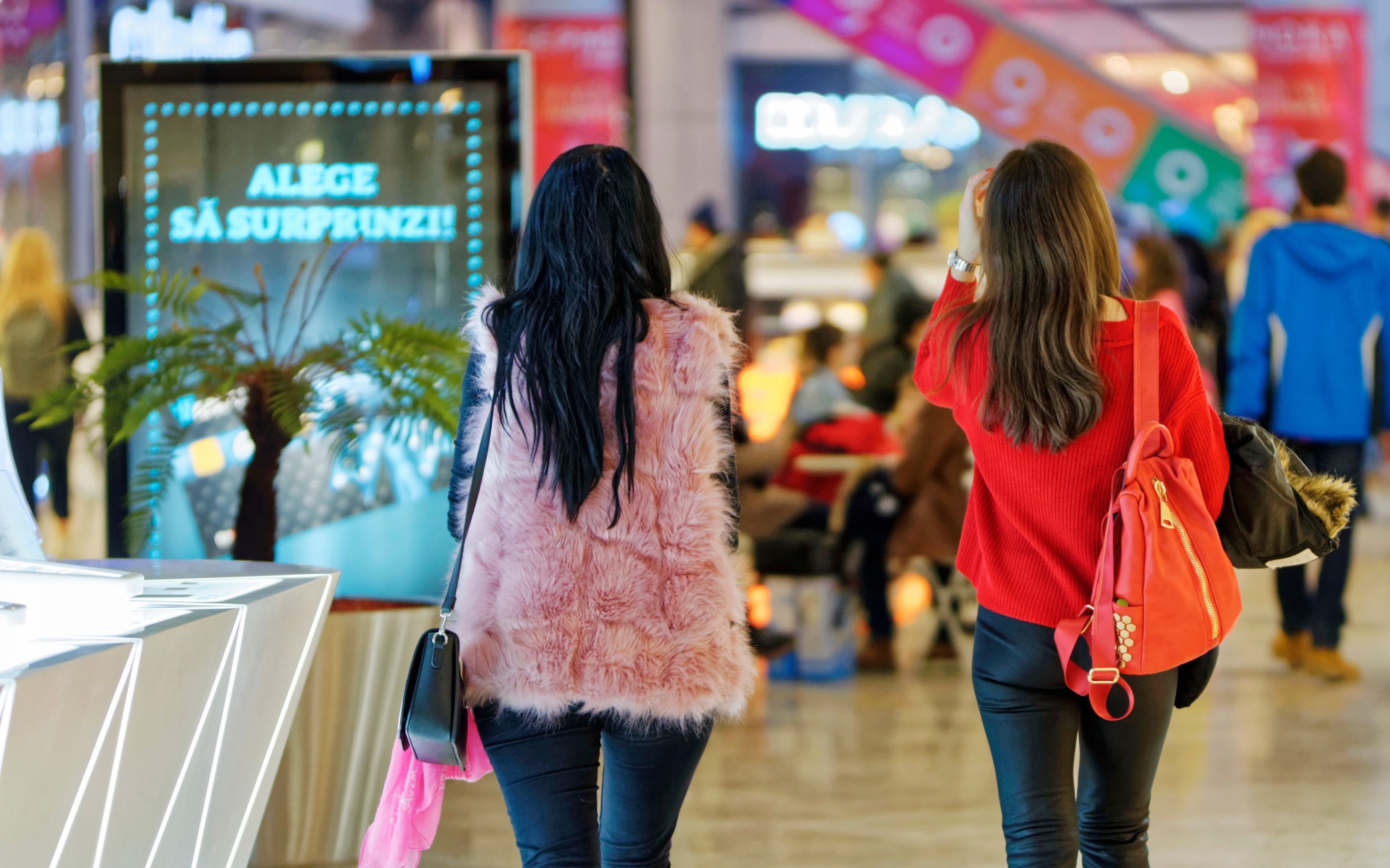In today’s fast-paced world, shopping malls have become more than just shopping places; they are immersive experiences where lighting plays a crucial role in enhancing customer engagement and ambiance.
But getting started on your mall lighting design can be daunting. You can easily get caught up in the hundreds of design choices, cool or warm white, how many lumens, and interior or exterior lighting.

In this article, we give you a practical guide to using LED lights in the mall as we delve into the benefits, applications, and business considerations of LED lighting.
What Is LED Mall Lighting?
Mall lighting refers to the practice of using strategic lighting design to create a comforting and engaging ambiance that encourages visitors to spend more time in the mall.
LED lighting has recently become the primary choice for small and mega malls. The compact size and exceptional energy savings of LED enable mall owners to add more light fixtures to the interior design without increasing the electricity costs.
A poorly lit mall interior discourages people from visiting and thus eventually leads to overall less commerce. Online shopping has taken a major chunk out of physical stores’ pockets today. Now more than ever, business owners are looking to improve the experience of visiting a mall.
People will leave their houses and shop at a physical retail store for the experience and ambiance. Something made possible with good mall lighting design.
Why LED Is the Best Choice for Mall Lighting
LED (Light Emitting Diode) lighting has become the go-to choice for business owners. Lighting is one of the key elements that attracts customers to a store, especially after sunset.
So, it should come as no surprise that a more reliable, versatile, and cost-effective lighting style has become the number one choice for malls that famously use a lot of light bulbs.
The LED light itself has its advantages and disadvantages, but it is still the best choice.

Here is just a short list of the major benefits LED lighting brings to mall interior design.
1. Energy Efficiency
LED lighting technology is the most efficient means of converting electric power into visible light. Traditional incandescent bulbs use electricity to generate heat, and that heat radiates visible light.
Hence, traditional lighting solutions will inherently be inefficient as they waste most of the energy in generating heat. The humble LED light bulbs work by passing current through a semiconductor material, causing it to directly illuminate.
In commercial spaces like Malls, the initial cost of light bulbs is significantly smaller than the ongoing operating expenses. The energy savings are incredibly substantial, going from incandescent bulbs to LED fixtures.
2. Longer Lifespan
Perhaps one of the more overlooked features of LED lighting is its excellent longevity. The exterior polycarbonate shells are much more resilient than the glass casings of incandescent and fluorescents.
Additionally, research has shown that their longevity offsets the initial cost of LED bulbs. LED products can last up to 25 times longer than incandescent bulbs. Resulting in significantly lower maintenance requirements and, thus, increased savings in the long term.
3. Dimmability
LED lights also offer quality-of-life improvements in the form of easily dimmable bulbs. Allowing mall operators to adjust lighting levels according to different times of day, seasons, or specific events.
This flexibility saves energy and helps create different moods and atmospheres within the mall.

4. Smart Lighting Automation
In the day of automation and smart apps, it makes sense to have complete remote control over the LED lights in your mall. Luckily, smart lighting control systems allow the ability to automate and adjust lighting in specific areas based on occupancy, daylight levels, and other factors.
Resulting in higher energy efficiency and lower operational costs.
5. Improved Lighting Quality
Quality LED light fixtures offer a high CRI (color rendering index), which indicates the ability of a light source to reflect the true colors of an object compared to natural sunlight.
With their vast offerings, malls benefit from improved lighting quality as it depicts their products in the best light possible.
The human eye is quite sensitive to detecting minor changes in lighting. Poor lighting is not only noticeable but also ruins the ambiance of a space.
6. Safety and Reduced Heat
LED light bulbs are also a lot more desirable from a safety point of view. They consume less energy, are more resilient to shock damage, and are often waterproof. Thus reducing the chances of accidental fires and other safety hazards.
Lower energy consumption also means less heat deposited to the surroundings, thus reducing the load on air conditioning.
7. Design Flexibility
Finally, we can never downplay the incredible design flexibility LED lights offer. They come in various shapes, sizes, and colors, allowing mall designers and operators to create customized lighting solutions that align with the mall’s overall design theme and branding.
LED technology makes nearly all of today’s colorful, bright, and awe-inspiring lighting designs possible.
Types of Mall Lighting
Mall lighting can be divided into three categories based on application, coverage, and style.
Ambient Lighting
The most common type of lighting technique involves using the light output of several fixtures to cover the entire interior space for general illumination and visibility.
Ambient lighting is meant to be in the background, something that isn’t noticeable but always present. You shouldn’t notice the ambient light when you enter a mall. Instead, you should be focused on the space itself.
Accent Lighting
Accent lighting is the exact opposite of ambient design. It takes a more active role in mall interiors and is meant to highlight specific objects, architectural features, or areas.
Accent light uses color, temperature, and brightness to direct the viewer’s eye to specific sections of the mall. You often see accent lighting enhancing the indoor fountain areas, highlighting floor models, or encouraging guests to visit food courts.
Task Lighting
Task lighting represents the practical side of the lighting design. It is strategically placed and designed to ensure that individuals have adequate and well-directed light to perform tasks effectively and comfortably.
These tasks can include maintenance work for the mall employees, directing guests to emergency exits, or highlighting products.
Create a Distinctive Mall Ambiance with LEDs

Make your mall interior stand out from the competition. Let LED lighting take your simple interior design and give it a distinct and welcoming embrace.
Here are a few ideas to get you started on your mall lighting design.
Crafting Moods with Light
Crafting moods with light is an art form that breathes a whole new life into a mall. All it takes is a bit of skillful manipulation of light’s intensity, color, and direction to evoke emotions, set atmospheres, and transform spaces.
From the soft, warm white glow of candlelight that creates an intimate and comforting ambiance in the winter to the bright, dramatic flood lights that invoke a futuristic look, LED lighting has got you covered.
Seasonal LED Themes
Seasonal interior design is a must-have for any small or large business. Everything from Christmas celebrations to the summer vacation season is more enticing with a little creative lighting.
Malls become a hub for gatherings and hangouts for a night out with friends. Use addressable RGB LED lights for creative pattern lighting. The best part of using LEDs is that you can quickly go from one season to another with little to no effort.
Going from Halloween to Thanksgiving to Christmas is as simple as changing the LED color and illumination pattern. Use LED flood lighting to color the walls in spooky orange or joyful green & red.
Additionally, mall owners can invest in LED display screens for a more detailed and visually appealing lighting design.
Mall Façade Lighting
Let’s move from interior lighting design to exterior coverage. Buildings need an eye-catching and visually unique façade to appeal to passersby. An exciting, intriguing, and colorful nighttime look will attract more visitors.
LED lighting can quickly turn a boring daytime off-white wall into a stunning pillar of light. In fact, there are several hundred LED lighting products specifically designed to give your mall exterior a fresh new look.
Floodlights can cover the entire building’s facade with white light, while spotlights can offer a splash of color.
Welcoming Outdoor Spaces
Moving a bit further outside, we land at the mall parking and street lighting. A good lighting design will set an ambiance before someone even enters the mall.
Use warm white street lamps to cover the exterior of your mall. Give passersby a reason to stay and take a quick peek inside your mall. If people want to be in front of your mall, they will want to go inside it.
Large outdoor spaces are less common in major cities, and this car parking has been shifted to underground levels. However, there is a lot of lighting design potential for the select few malls that still have a large outdoor parking area.

For example, you can use LED lights to guide visitors to the mall entrance and provide a safe and well-lit space for their exit.
Boosting Sales through LED Strategy
Lighting is a critical element of marketing. Good lighting design will encourage people to not only visit the mall but also to shop more effectively.
Guiding Shopper Movement
Well-placed LED lights can guide customers to certain hot seasonal items. Additionally, good lighting can indicate a more convenient path to shoppers so they can visit the maximum number of shops in one visit.
Product Highlighting with LEDs
Malls can take the initiative and highlight value products using selective LED lighting. Showcase seasonal items and gift shops by using brighter LEDs for certain areas.
LEDs in Marketing Campaigns
LEDs can be programmed to run in certain patterns. Pattern lighting quickly grabs the attention of nearby people, and it can be a useful tool in marketing campaigns.
Add an LED outline to product displays and wall advertisements to make them more appealing.

Shopper Safety and LEDs
Safety should always be a top priority for any publicly accessible business, and proper lighting plays a huge part in this regard.
Ensuring Adequate Illumination
Use wide-beam angle LEDs to cover as much floor space as possible. Visitors should be able to clearly see any hurdles, corners, or floor displays. So no one accidentally bumps into things and gets hurt.
Emergency LED Systems
Power outages can quickly cause panic in a crowded space. Use emergency LED light fixtures that quickly turn on when the electricity fails.
These can be battery-operated independent units or a whole secondary lighting system control connected to an alternative power source.
Safety Signage
Proper safety signs are not only a necessity for mall owners but a legal requirement. As per OSHA standards, safety signs should be well-placed and easily legible for guests.
Backlight LEDs are a quick and easy way to make these signs more prominent in case of emergencies.
How to Choose the LED Lighting for Mall
Choosing the right LED lighting design for your mall can be challenging. So, we have made it easier by highlighting major factors contributing to a successful mall lighting setup.
Determine the Purpose of Lighting
First, outline the goal of your lighting design. Is it to improve the overall visibility and ambiance or re-invigorate your mall’s nighttime look with a bit of color?
Mall owners can always look to lighting designers and contractors for advice and guidance.
Consider the Color Temperature
Correlated Color Temperature (CCT) refers to the hue of your white light. LED products come in blueish cool and yellow warm tones.
Cool blue creates a more focused and productivity-oriented atmosphere, while warm yellow is all about creating a comforting experience.
How Many Lumens Do You Need?
Lumens are a measure of the brightness of an LED light bulb. Higher lumens mean a brighter environment but also mean higher power draw.
Generally speaking, mall interiors should have at least 10-20 lumens per square foot. Contrarily, staircases, bathrooms, and kitchens require at least 50-75 lumens per square foot.
Conclusion
Malls are a hub for people of all ages to gather and spend quality time with their friends and families. Using LED lights, we can make their visit a memorable experience. Good lighting creates mood, ambiance, and a sense of comfort.
We hope this article has given you the information necessary to help you get started on your mall lighting design and the lessons learned will make it a unique space that reflects your personality and values.
Ask For Free Quote
Let us Respond Promptly for your Needs :)
Elevate Your Mall Design with RC Lighting
RC Lighting is an experienced manufacturer and supplier of LED lighting solutions. We have dedicated ourselves to exceptional product quality and best-in-class customer service for over a decade.
Our products are CE, RoHS, and UL/ETL certified and have a standard five-year warranty. Look at our diverse and feature-rich indoor LED lighting solutions and choose the ones that best fit your design aesthetic.
Get started on your Mall Lighting Design Today! Contact Us Now!



